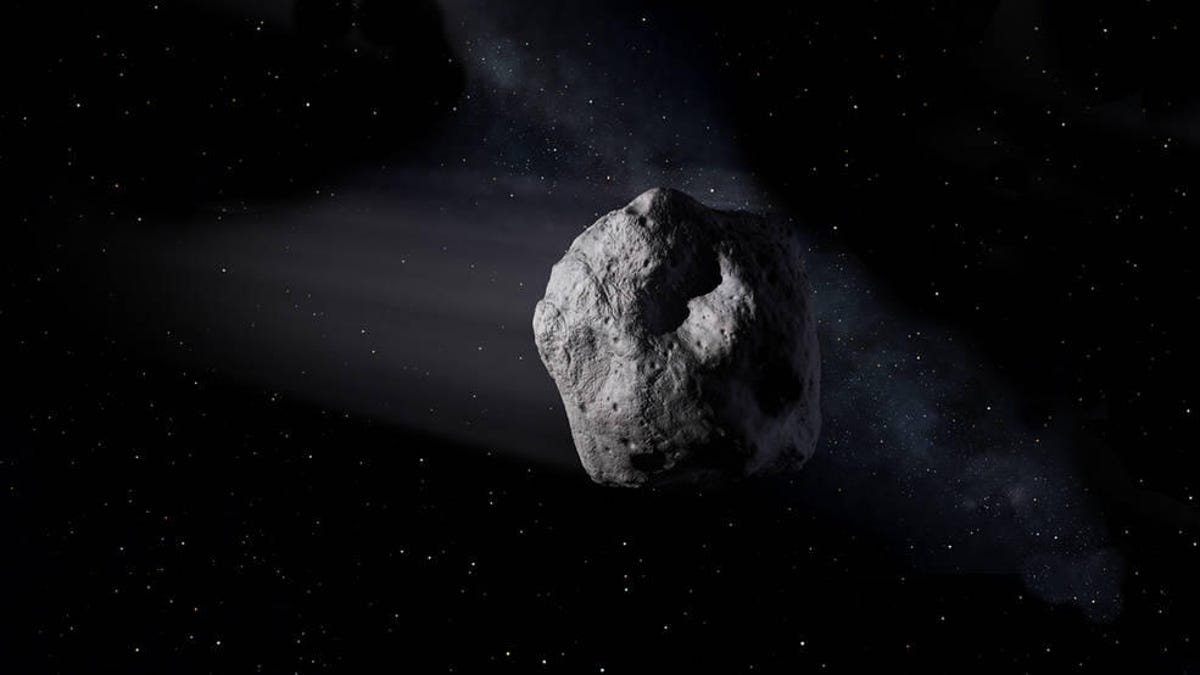A massive asteroid (and some smaller ones) just passed close to Earth
They didn't stop to say hello, but a mountain of a space rock and some friends did visit the neighborhood.

Artist's impression of one big space rock.
An asteroid the size of a mountain cruised through our cosmic neighborhood Wednesday and humanity survived, because even a close pass in space terms isn't actually that close.
In fact, asteroid 1998 OR2 was always no closer than 3.9 million miles (6.3 million kilometers), putting it over 16 times farther away than the moon.
Still, 1998 OR2 was a rare monster of a space rock, at 1.5 miles (2 kilometers) wide. It was large enough to allow a number of astronomers to catch it as it took a little jaunt through our domain.
Asteroid 1998 OR2 (the central dot) as it traversed the constellation Hydra five days before its closest approach to Earth. It was about 4.4 million miles (7.08 million kilometers) away from Earth at the time.
The object made its close approach at 2:55 a.m. Pacific and safely whizzed back out to deeper space. This is the first close approach by such a large asteroid since 2017.
Interestingly, this week in space was also punctuated by a handful of far smaller asteroids coming much closer to our planet. According to NASA's database, at least five asteroids have come closer to our planet than the moon over the last seven days.
None of these asteroids were much bigger than a house, but one -- asteroid 2020HS7 -- did come nearly as close as geosynchronous orbit, where many of our larger satellites hang out.
We get such close visitors multiple times a year, so it's really nothing to worry about, but always worth keeping an eye (and lots of telescopes) on the sky.

